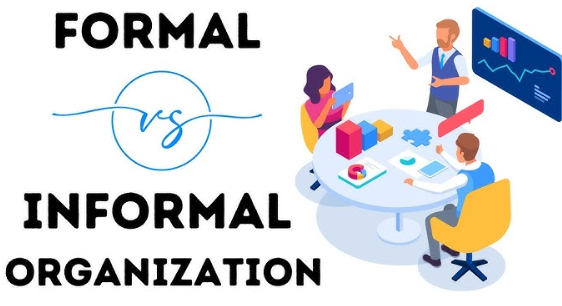Understanding Differences Between Hearing and Listening
It’s important to understand the difference between hearing and listening. These two processes seem identical but are actually quite distinct. They both play important roles in human communication, but they are not interchangeable. Hearing is a physiological activity that happens automatically, whereas listening is an active ability. Listening requires involvement, focus, and effort. To improve communication in daily situations—whether in interpersonal interactions, the workplace, or educational settings—it’s essential to understand the distinction between hearing and listening. This article explores the main differences between hearing and listening, their significance in clear communication, and methods to enhance both skills.
1. What is hearing?
The ear’s ability to perceive sound waves is a passive, automatic aspect of hearing. This sensation, one of the five senses, starts as soon as sound waves strike the eardrum. The sound waves transform into electrical impulses that the brain can process. Hearing takes no conscious effort or focus since it is a natural function. For example, your ears constantly pick up noises in a noisy area, even when you’re not paying attention to them.
1.1 The Stages Involved in the Hearing Process
- Sound Waves: Sound moves through the atmosphere as vibrations or sound waves.
- Outer Ear: The outer ear gathers the sound waves and sends them through the ear canal.
- The Eardrum: The eardrum and middle ear vibrate when sound waves strike them. The ossicles, or middle ear bones, receive these vibrations.
- Inner Ear: The cochlea, a fluid-filled organ with microscopic hair cells, receives the vibrations. These hair cells convert the vibrations into electrical impulses.
- Brain: The brain interprets the electrical signals into a distinguishable sound.
Hearing essentially occurs spontaneously and naturally. Whether we are aware of the sounds around us or not, it happens. It doesn’t take conscious thinking or effort. For instance, you may be reading a book when you hear traffic noise, but you aren’t consciously listening to it.
2. What is meant by listening?
Listening, on the other hand, is an active process. It requires deliberate concentration, focus, and mental involvement. In addition to hearing sounds, listening involves analysing, understanding, and reacting to them. Engaging in active listening means paying great attention to what’s being said. It also involves thinking about the information and processing it to make sense of it.
2.1 Phases of Listening
- Receiving: The initial stage of listening involves hearing the sound. Like the hearing process, this stage requires deliberate concentration.
- Understanding: After processing the sound, the brain begins to interpret its meaning. This relates to how well the listener understands the words, concepts, and emotions being conveyed.
- Assessing: The listener evaluates the message’s accuracy, relevance, and credibility. This requires judgement and critical thinking.
- Remembering: A good listener can recall important details from what has been said.
- Responding: The listener shows their understanding of the message through verbal or non-verbal feedback.
Listening involves more than just hearing sound. It requires interpretation, evaluation, and intelligent responses. The ability to concentrate, understand non-verbal cues, and grasp context all influence listening. Listening demands active engagement.
3. Crucial Distinctions Between Hearing and Listening
Let’s examine their key distinctions after defining hearing and listening.
3.1 The Passive vs. Active Method
- Hearing: Hearing occurs passively. It happens automatically, without conscious effort. The brain receives sound waves from the ears, but the listener doesn’t need to concentrate or actively analyse the information.
- Listening: Listening is a dynamic activity. The listener must focus, pay attention, and put in effort. To listen well, one needs to pay attention not only to the content but also to the context, tone, and emotions in the message.

3.2 Cognitive and Emotional Resources Involved
- Hearing: Most of the hearing process is physiological. It’s a biological function that doesn’t require much mental or emotional effort. Hearing can still occur, though less effectively, when you’re tired or distracted.
- Listening: Listening requires mental effort and cognitive resources. It involves understanding, evaluating, and critically analysing the message. Emotional engagement is also part of listening. Active listening, for example, includes empathy—recognising and sharing the speaker’s feelings.
3.3 The Objective
- Hearing: Hearing’s purpose is to detect sound. It alerts the brain to external stimuli, such as warning signals or ambient noise. Communication depends on hearing, but hearing alone does not guarantee understanding or engagement with the message.
- Listening: Listening aims to understand, analyse, and respond to the message. Active listening requires deeper involvement and attention to the spoken word. It allows one to process the information and form an opinion or response based on it.
3.4 Mindful Effort
- Hearing: Hearing requires no conscious effort. You may hear noises in your environment even if you aren’t trying to listen or paying attention. For example, you could be working while hearing background noise, but you won’t engage with it until you decide to focus on it.
- Listening: Listening is a conscious activity. It demands attention, focus, and the ability to block out distractions. Listening involves intentionality, requiring the listener to understand and react to the information.
3.5 Results and Effects
- Hearing: The result of hearing is the ability to detect sound. It does not guarantee that the listener understands or processes the information. For example, hearing the phone ring doesn’t necessarily mean that you are planning to pick it up.
- Listening: Effective communication comes from listening. Listening leads to understanding, learning, and the ability to respond appropriately. Stronger relationships are formed, decisions are improved, and problem-solving skills are enhanced through active listening. When you listen attentively, you can retain information and provide thoughtful feedback.
4. The Value of Listening in Interaction
Listening facilitates effective communication, even though hearing is necessary for detecting sound and receiving auditory information. Here are some reasons why listening is significant:
4.1 Better Knowledge
Listening enables individuals to understand the message being conveyed. If you don’t listen carefully, you may overlook important information or misunderstand the speaker’s intentions. Focusing on the message helps listeners better comprehend what’s being communicated.
4.2 Resilient Connections
Building and maintaining strong relationships requires active listening. People feel valued and respected when they know they are being heard and understood. Active listening fosters rapport and trust in both personal and professional settings.
4.3 More Effective Problem-Solving
Attentive listening leads to better decision-making and problem-solving. When listeners pay close attention to all aspects of a topic, they gather more relevant information and consider different perspectives. This enhances critical thinking and problem-solving abilities.
4.4 Handling Conflict
Listening is a crucial skill for resolving conflicts. People who actively listen during disagreements are more likely to understand the other person’s perspective and resolve issues in a positive manner. Listening can help reduce conflict and create areas of agreement by demonstrating empathy and understanding.
5. How to Develop Your Ability to Listen
Unlike hearing, which happens naturally, listening is a skill that can be learnt. To improve your listening abilities, consider the following tips:
5.1 Be Present
It’s essential to be fully present in the moment when listening. Turn off any distractions, such as your phone or computer, and focus entirely on the speaker.

5.2 Provide Feedback
Offer both verbal and non-verbal cues to show that you are engaged. Making eye contact, nodding, and offering brief verbal cues like “I see” or “I understand” signals your attentiveness.
5.3 Avoid Interrupting
Interrupting disrupts the flow of conversation and may make the speaker feel ignored. Let the speaker finish before responding. Only offer your thoughts when it’s appropriate.
5.4 Ask for Clarification
If something is unclear, ask questions for better understanding. Asking clarifying questions shows your interest in comprehending the material and actively engaging with it.
5.5 Show Empathy
Consider the speaker’s emotions and perspective. Training yourself to be empathetic will enhance your ability to listen and respond with understanding and compassion.



